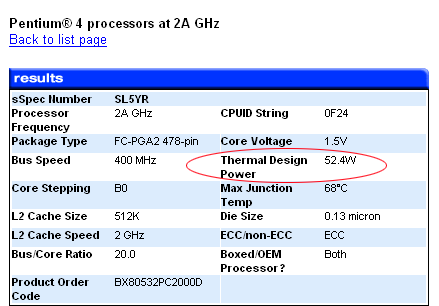After careful consideration I have decided to transfer all hardware review activities to a new domain. I purchased Hardwareasylum.com in 2012 and have been working hard to build a new and improved Ninjalane on that domain. If you are reading this you have reached one of the archived articles, news, projects and/or reviews that were left behind during the site migration.
Please update your bookmarks and be sure to visit the new and improved Ninjalane at Hardwareasylum.com
AVC Sunflower II Heatsink Review
Author: Dennis Garcia
Published: Tuesday, December 03, 2002
Benchmarks
The AVC Sunflower II is designed for Pentium 4 Processors 3.2Ghz and up. Since I don't
have access to one of this speed my trusty 2.0Ghz will just have to do, here is an overview of the system and testing methodology.
Soltek SL-85DR-C
Pentium 4 2.0Ghz (SL5YR)
Sunflower II
Stock Intel Cooler
Soltek SL-85DR-C
Pentium 4 2.0Ghz (SL5YR)
Sunflower II
Stock Intel Cooler
I used Winbond HWDoctor to provide me with temperature information from the system. A simple game of Quake 3 provided my 100% processor usage.
Editors note: Even though the Windows XP task manager reported 100% processor usage we could never attain a 100% of the rated heat output as documented by Intel. (see below) using Quake3 as a basis for that heat production. Knowing this the game was played until the maximum temperature was attainted and stabilized, or when the round was over.
Other things to consider when judging software induced heat output.
a) Clock throttling by the processor at high temperatures.
b) Normal software isn't designed to produce maximum heat output.
c) Variances of cooling temperature.
d) Variances in CPU load.
e) Inaccuracies in thermal diode readouts.
Of course the list goes on..
My testing methodology is aimed to provide a real world look into this heatsink given the test system provided.
Editors note: Even though the Windows XP task manager reported 100% processor usage we could never attain a 100% of the rated heat output as documented by Intel. (see below) using Quake3 as a basis for that heat production. Knowing this the game was played until the maximum temperature was attainted and stabilized, or when the round was over.
Other things to consider when judging software induced heat output.
a) Clock throttling by the processor at high temperatures.
b) Normal software isn't designed to produce maximum heat output.
c) Variances of cooling temperature.
d) Variances in CPU load.
e) Inaccuracies in thermal diode readouts.
Of course the list goes on..
My testing methodology is aimed to provide a real world look into this heatsink given the test system provided.

Recorded Temperatures
A stock Intel heatsink was used as a basis for comparison.

A C/W rating can quickly be calculated using this formula.
C/W = (CPU temp - Ambient temp)/(Variance(%) * CPU Watts)
Allowed variance for this test = 75%
CPU Watts = 52.4W
0.23 C/W = (35C - 26C)/(.75(52.4W))
C/W = (CPU temp - Ambient temp)/(Variance(%) * CPU Watts)
Allowed variance for this test = 75%
CPU Watts = 52.4W
0.23 C/W = (35C - 26C)/(.75(52.4W))

To calculate how the C/W rating has changed we will need to factor in the increased processor
wattage. The forumla for this is listed below.
ocC/W = dCPU Watts * (ocMhz / dMhz) * (ocVcore / dVcore)2
ocMhz = 2440
dMhz = 2000
ocVcore = 1.65
dVcore = 1.50
The variance still applies for our C/W calculation
Allowed variance for this test = 75%
CPU Watts = 77.4W
0.20 C/W = (37.5C - 26C)/(.75(77.4W))
You will notice the change in the C/W rating; this gives us an idea as to how well this heatsink is able to dissipate a given load. The lower this number is the better the heatsink is at cooling. We can also get an idea as to the heatsinks capacity by looking at the change in C/W in relation to CPU speed.
The graphs pretty much say one thing. I need a faster processor.
Keep in mind this calculation is provided for demonstration purposes only.
ocC/W = dCPU Watts * (ocMhz / dMhz) * (ocVcore / dVcore)2
ocMhz = 2440
dMhz = 2000
ocVcore = 1.65
dVcore = 1.50
The variance still applies for our C/W calculation
Allowed variance for this test = 75%
CPU Watts = 77.4W
0.20 C/W = (37.5C - 26C)/(.75(77.4W))
You will notice the change in the C/W rating; this gives us an idea as to how well this heatsink is able to dissipate a given load. The lower this number is the better the heatsink is at cooling. We can also get an idea as to the heatsinks capacity by looking at the change in C/W in relation to CPU speed.
The graphs pretty much say one thing. I need a faster processor.
Keep in mind this calculation is provided for demonstration purposes only.

